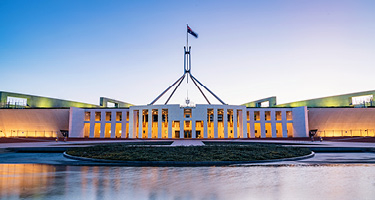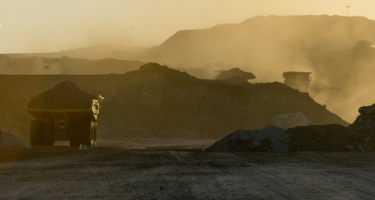This paper was originally published in The Best Lawyers in Australia 2022 edition and written by Rebecca Hoare, Partner1.
As a nation rich in agricultural and mineral resources, Australia proudly asserts itself as a leader in both sectors on the world stage. Domestically, however, it is no secret our critical industries have come to blows. Where a parcel of land is both mineral-rich and agriculturally fertile, what is our priority? Can the law support both to thrive without compromising the environment?
Lawmakers have long grappled with these questions, but now they are undertaking this delicate balancing act under the watchful eye of a population which is more socially and environmentally astute than ever before.
Our planning and environment law landscape as it stands today is the product of sustained attempts to find a fair middle ground and answer the question¾can we really have it all?
Towards Sustainable Mining
Resources regulation has been an active area of reform over the past couple of years. A number of recent developments across jurisdictions have sought to increase efficiency, transparency and accountability.
With the Mineral and Energy Resources and Other Legislation Amendment Act 2020, Queensland has bolstered environmental performance, requiring mining companies to develop Progressive Rehabilitation and Closure Plans. The Act has also heightened scrutiny of the financial and technical capabilities of a resource authority holder when there is a change in ownership.
The New South Wales Minerals Strategy, published in 2019, also includes improved compliance and reporting requirements for rehabilitation. In a similar spirit, amendments to Victoria’s Mineral Resources (Sustainable Development) Act 1990 have established a Mine Rehabilitation Authority, which will monitor, maintain and manage declared mining land.
At a Commonwealth level, a statutory review of the Environment Protection and Biodiversity Conservation Act 1999 (EPBC Act) resulted in a Final Report published in January 2021, which was scathing of the cumbersome instrument and its inability to protect Australia’s environment. A centerpiece of the report was the recommendation for legally enforceable National Environmental Standards. While this report is now with the Commonwealth Government for consideration, implementation would no doubt impact the resources industry through stronger compliance and enforcement obligations.
Regulation aside, resources companies are increasingly recognising environmental accountability, social responsibility, and profitability go hand in hand. To be considered a leader in the resources sector¾and not run foul of the company’s social license to operate¾a sustainability strategy is now a ‘must have’ rather than a ‘nice to have’. Considerable dollars are being invested in research and innovations that can secure better environmental outcomes. The Australian Minerals Industry has also adopted ‘Towards Sustainable Mining’, an accountability framework applicable to all members of the Minerals Council of Australia, which promotes transparency and best practice. It ‘recognises that access to land is earned by demonstrating responsible land stewardship throughout the mining lifecycle’.2
Regulation aside, resources companies are increasingly recognising environmental accountability, social responsibility, and profitability go hand in hand."
Protecting Agricultural Land
Agricultural purposes account for 55% of Australia’s land use and are responsible for 11% of the nation’s goods and services exports.3 Mineral-rich land is often found within thriving agricultural hubs, giving rise to complex negotiations for land access and compensation.
In recent years there have been a number of legislative endeavours aimed at giving landholders greater protection.
Queensland’s Regional Planning Interests Act 2014 earmarked land considered ‘areas of regional interest’, ‘priority agricultural areas’, ‘strategic cropping areas’ and ‘strategic environmental areas’. The Act introduced an assessment framework to manage the impact of resource activities on the abovementioned areas, necessitating a ‘regional interest authority’ for those resources activities that do not fall within an exemption provision. Developments such as coal seam gas, underground coal gasification, mining, urbanisation and permanent forest plantations are now assessed under this regulative regime.
Underground resources activities have proved to be a hot topic of discussion, particularly in terms of determining fair and adequate compensation. While the activity may be conducted underground, the potential for subsidence should be considered, particularly where this might interfere with productive cropping land. The impact this has on landholders was acknowledged by the New South Wales government in 2017, with the introduction of the Coal Mine Subsidence Compensation Act, which instituted fairer and quicker claims processes for surface damage caused by underground operations.
At a Federal level, the Landholders’ Right to Refuse (Gas and Coal) Bill 2015, which was extensively debated until 2019, constitutes one of the more bold attempts to influence the balance of power in favour of agriculture. While the bill was ultimately unsuccessful, it is a pertinent example of the balancing exercise that defines the ever-evolving relationship between Australia’s agriculture and resources industries and the environment.
Environmental Awakening Infiltrates Litigation
Environmental litigation, particularly as it applies to the approval of resources activities, often necessitates a consideration of the ‘public interest’. As concerns around climate change and human rights dominate public discourse, these are now finding their way into litigation across Australian jurisdictions.
Human rights (as affected by climate change) debated in the court room
The Australian Capital Territory, Victoria and Queensland now have their own human rights acts, which are proving increasingly relevant for planning and environment lawyers. In the recent Queensland Land Court matter of Waratah Coal Pty Ltd v Youth Verdict Ltd & Ors (No 2),4 objectors to the grant of a mining lease argued the grant of a lease and an associated environmental authority would be incompatible with the Human Rights Act 2019, limiting a number of rights, namely: the right to life; the right not to have one’s privacy, family, home or correspondence unlawfully or arbitrarily interfered with; property rights and the cultural rights of Aboriginal and Torres Strait Islander peoples; among others.5 While this argument was not determined by the Land Court, it did require the objectors to provide an exhaustive list of classes of individuals whose human rights they say will be limited by the grant of a mining lease.
Consideration of climate targets
The New South Wales Land and Environment Court case of Gloucester Resources Ltd v Minister for Planning is also noteworthy.6 The judge decided a proposed coal mine development would be “in the wrong place at the wrong time”, this being a reference to "the greenhouse gas emissions of the coal mine and its coal product [that] will increase global total concentrations of greenhouse gasses at a time when what is now urgently needed, in order to meet generally agreed climate targets, is a rapid and deep decrease in greenhouse gas emissions".7
Duty of care
Most recently in the Federal Court, Justice Bromberg held that the Federal Minister for the Environment had a duty to take reasonable care in the exercise of powers when assessing and deciding whether to approve the extension to the Vickery coal mine near Gunnedah in New South Wales under the EPBC Act.8 That duty was expressed as a duty to avoid causing personal injury or death to persons who were under 18 years of age and ordinarily resident in Australia arising from the emissions of carbon dioxide into the Earth’s atmosphere. This demonstrates that while an individual mine may not on its own make a significant contribution to climate change, this case shows the judiciary is conscious of community expectation and the need for a holistic view of climate change.
Conclusion
Recent history indicates there will not be one single point at which all parties¾agricultural, resources, and environment advocates alike¾agree on a perfect equilibrium. Each industry, along with environmental activists, will have its own agenda at the fore. What is clear, though, is societal expectations are shaping the law and best practice standards of these key industries. While it might be a case of give and take to an extent, the voices of our agricultural and environmental proponents are growing louder.
To operate harmoniously, no one sector can ‘have it all’. The legal landscape will continue to evolve as lawmakers attempt to find this delicate balance and keep pace with burgeoning environmental needs and community expectations.
1 The author acknowledges the assistance of Lauren Reddiex, Seasonal Clerk.
2 ‘Land Use’, Minerals Council of Australia (Web Page, 15 July 2021) <https://www.minerals.org.au/land-use>.
3 ‘Snapshot of Australian Agriculture 2021’, Australian Government Department of Agriculture, Water and the Environment (Web Page, 15 July 2021) <https://www.agriculture.gov.au/abares/products/insights/snapshot-of-australian-agriculture-2021>.
4 [2021] QLC 4.
5 Ibid [6].
6 [2019] NSWLEC 7.
7 Ibid [699].
8 Sharma by her litigation representative Sister Marie Brigid Arthur v Minister for the Environment [2021] FCA 560
Rebecca Hoare is an environment and planning lawyer and partner in the Brisbane office of Norton Rose Fulbright Australia. She has nearly 20 years’ legal experience and is recognized in Best Lawyers for 2022 for her work in mining law, planning and environment law, climate change law, and land use and zoning law.





























